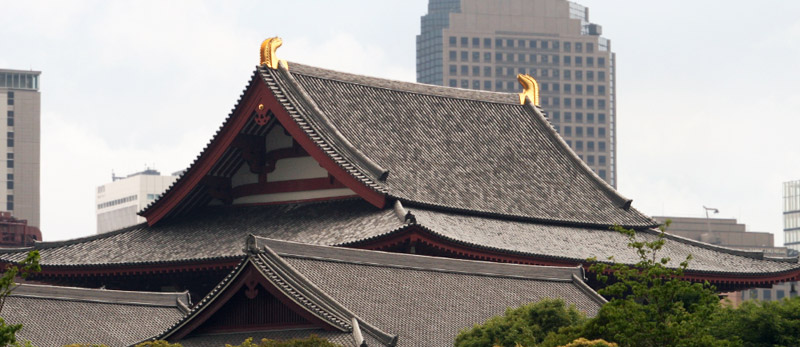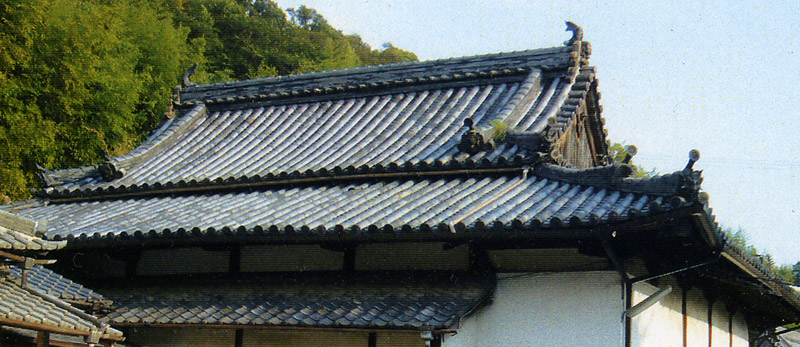|
||
 |
||


@
(C)2001 Japanese Architecture and Art Net Users System.@No reproduction or republication without written permission.
fÚÌeLXgEÊ^ECXgÈÇASÄÌRec̳f¡»E]ÚðֶܷB
|
||||||
| @ | ||||||
| shikorobuki@èC | ||||||
| KEY WORD :@architecture / general terms | ||||||
| @ | ||||||
| Also called shikoroyane èC®ª. A method of constructing a hip-and-gable roof on separate planes. The gable is constructed so that the front and rear parts clearly end like eaves, over-hanging the independently roofed hips. Thus, there is no continuous roof line flow. The earliest extant example is the Tamamushi miniature shrine *Tamamushi no zushi Ê~q owned by Houyuuji @² (mid-7c) in Nara. During the Edo period a type of shikorobuki was constructed by covering the core of the building with a gable roof and then adding broad aisles or a corridor *hisashi ù, around the core and covering this separately with pent roofs. Some buildings had the gable part thatched and the hips covered with tile. Other buildings used two separate layers of thatch of differing thicknesses. The latter two methods were used on vernacular dwellings *minka ¯Æ. During the Edo period, some main halls *hondou {°, and the kitchen buildings *kuri É¡, in large Zen style temples *zenshuuyou T@l, were roofed with shikorobuki. Example: The original structure of Zuiganji Kuri ÜÉ¡ (1609), Miyagi prefecture. | ||||||
| @ | ||||||
  |
||||||
@ |
||||||
| REFERENCES: | ||||||
| *yane ®ª | ||||||
| EXTERNAL LINKS: | ||||||
| @@ | ||||||
| NOTES: | ||||||
| @ | ||||||
(C)2001 Japanese Architecture and Art Net Users System.@No reproduction or republication without written permission. fÚÌeLXgEÊ^ECXgÈÇASÄÌRec̳f¡»E]ÚðֶܷB |
||||||
| @ |